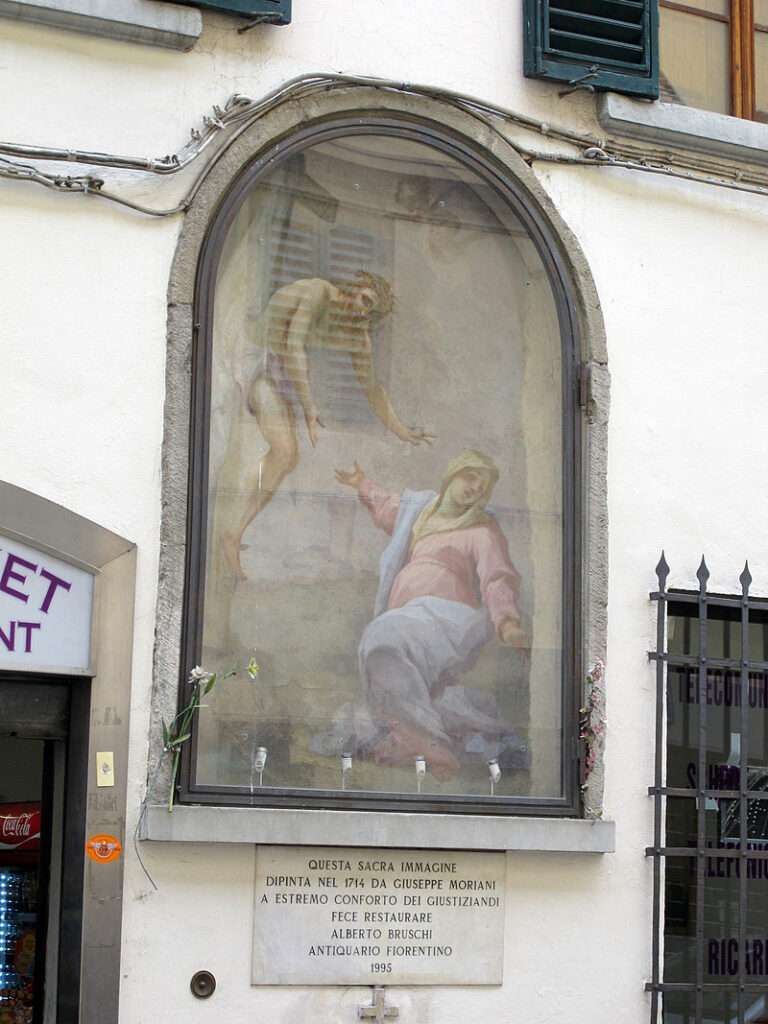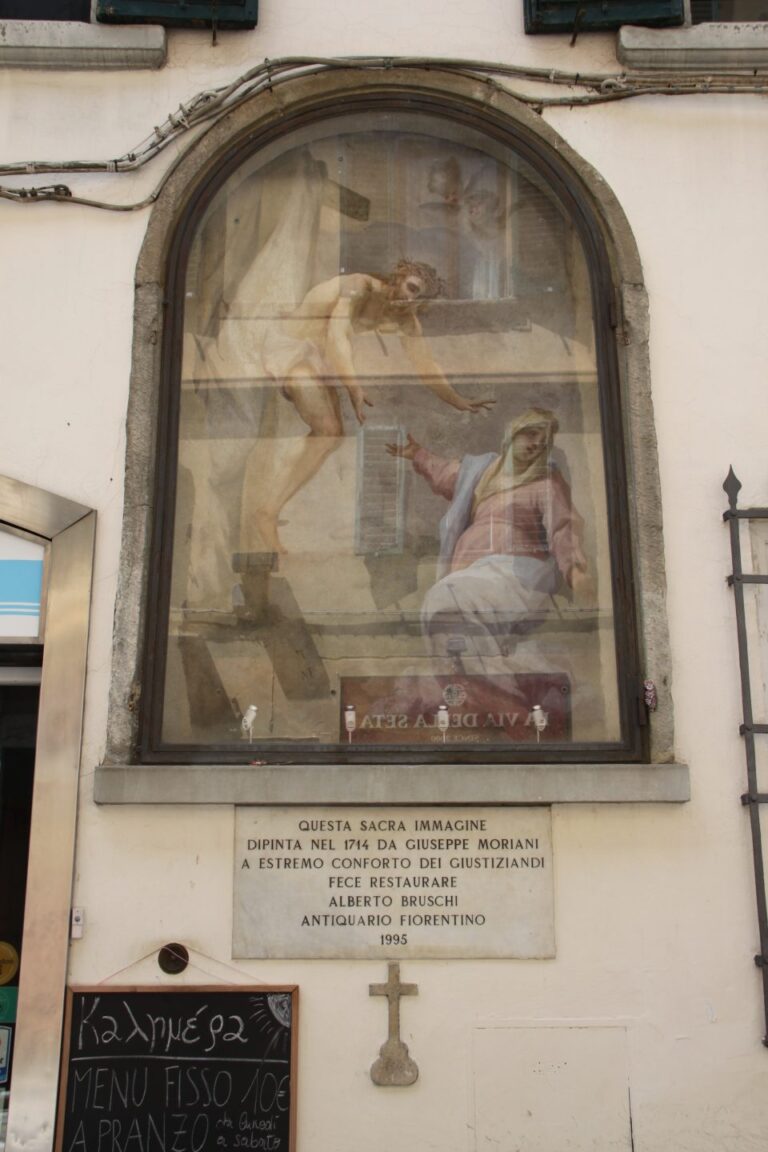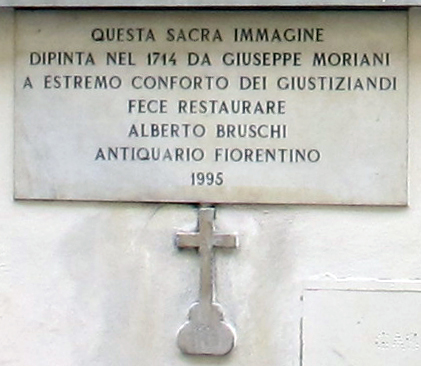Tabernacles of Florence
Borgo la Croce n. 13
THE TABERNACLE
Tabernacolo dei condannati
The "Tabernacolo dei Condannati" (the "Tabernacle of the Condemned") was realized in 1714 and represents Christ descending from the cross for the prayers of Madonna, who intercedes for the condemned. The subject is appropriate and moving since it is the journey last stage that led the condemned to their torture.
Tabernacle
In 1995, Florentine antiquarian Alberto Bruschi intervened to save the tabernacle, arranging for the painting and frame restoration. Through consolidation, cleaning and integration of the pictorial surface, the tabernacle has regained the 18th-century grace and suggestion of an image of great veneration and popular mercy.
THE STREET
VIA BORGO LA CROCE
The name "borgo" indicates that the street was a thoroughfare leading out of a city gate in the ancient medieval city walls. Nothing in the old nomenclature suggests that there was the gallows site beyond the city walls, erected to execute those sentenced to death in public. It was handed down that the first to undergo the torture at that spot was the martyr Miniato and that a cross was erected in memory of the atrocious event, the “Croce al Gorgo” (the “Cross at Gorgo”), which maintained the memory over the centuries thanks to its name.
AUTHOR
Giuseppe Moriani
(1681 - 1731) The painter Giuseppe Moriani, an Antonio Giusti and Camillo Sacrestani pupil, was active in Florence in the first three decades of the 18th century, producing frescoes in Palazzo Capponi and Santa Verdiana of Castelfiorentino.
The artist
(1681 - 1731) In the “Tabernacolo dei Condannati”, the artist deployed an effective artifice: he accentuated the effect of perspective depth of the scene by painting on a curved surface instead of a flat one, thus giving volume and looseness to the kneeling Virgin figure and especially to the Christ detached from the Cross, who extends his arms downward in a natural gesture for a loving embrace to the supplicants.
Curiosity
The work was possibly commissioned by the Teresian nuns, also known as the “Carmelitane Scalze” (the “Discalced Carmelites”), whose convent was located on the opposite side of the street: their coat of arms, the intertwined S and T, is still visible above two houses adjoining to the tabernacle.
OTHER INFORMATIONS
Info
AMICI DEI MUSEI FIORENTINI ODV - COMITATO PER IL DECORO E IL RESTAURO DEI TABERNACOLI - File by Giuliana Righi - Restoration by Alberto Bruschi - Restorer: Guido Botticelli 1995
PICTURES

Tabernacle
Borgo la Croce 13

Tabernacle
Borgo la Croce 13

Plaque
Borgo la Croce 13
